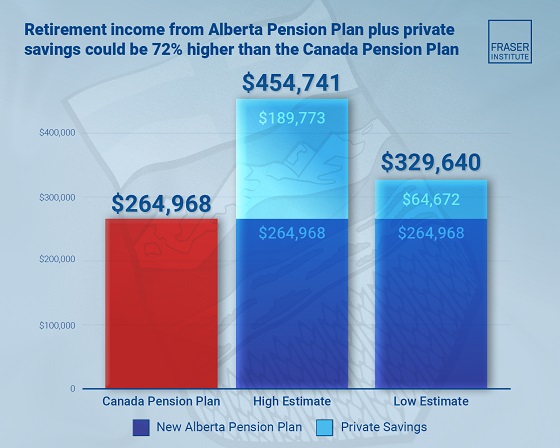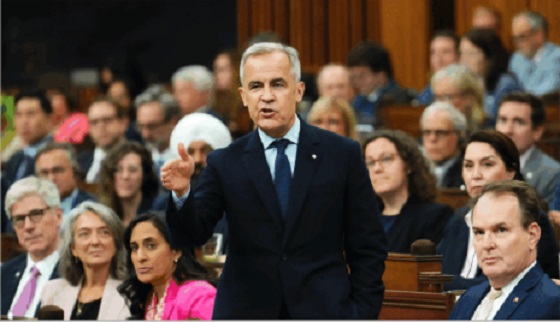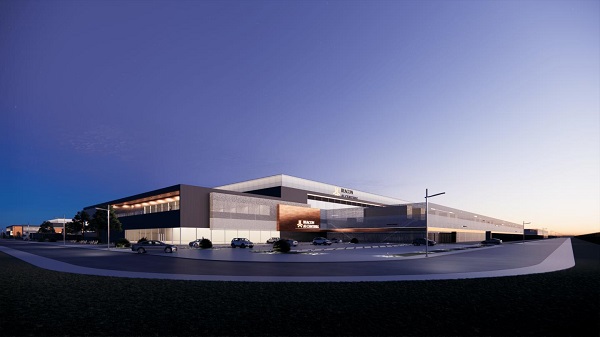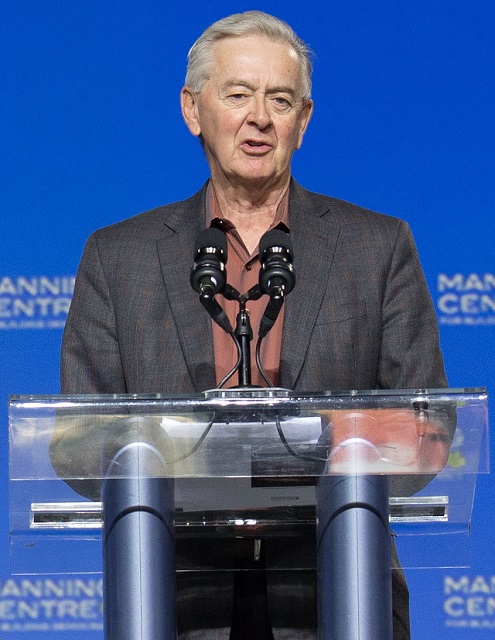Alberta
Red Deer Justice Centre looking to add courtroom space as construction nears completion

Construction of the new Red Deer Justice Centre is nearing completion.
Alberta’s government is investing in courthouse infrastructure to provide Albertans with courthouses that are modern, safe and easy to access.
Upgrading and building new courthouses improves Albertans’ access to the justice system by adding courtrooms and making buildings easier for everyone to navigate. Red Deer is getting a new building with additional courtrooms while Brooks, Hinton and Peace River will see renovations to the existing courthouses to make them more user-friendly and to provide updated security, privacy and accessibility features.
Red Deer Justice Centre
With an investment of more than $200 million, construction of the new Red Deer Justice Centre is nearing completion. Once finished, it will have 12 courtrooms ready for use, an increase from eight at the current facility. This will allow more cases to be heard at one time so matters can proceed in a timely manner. A $200,000 investment in Budget 2023 will support a planning study to build out four additional courtrooms, which, when complete, will bring the total number of courtrooms to 16.
The justice centre will also have spaces for people taking alternative approaches to the traditional courtroom trial process, with three new suites for judicial dispute resolution services, a new Indigenous courtroom with dedicated venting for smudging purposes, and a dedicated suite for alternative dispute resolution services such as family mediation and civil mediation.
Albertans continue to access court services at the existing Red Deer courthouse while the new centre is being built.
“Upgrading our province’s courthouses gives Albertans a more secure and comfortable experience when they need to visit court. By building a new justice centre in Red Deer, we are taking steps to increase capacity in the justice system to keep up with demand.”
Brooks courthouse
The upgraded Brooks courthouse is fully operational, as renovations were completed in August. A $4.6-million investment by Alberta’s government enabled many improvements to the courthouse, including a new public waiting area, vulnerable witness room, holding cells, prisoner dock and other updates. Alberta’s government is also investing in upgrades to courtroom audiovisual equipment at the Brooks courthouse.
“Access to justice services within communities across Alberta is critically important. Not only will these projects help increase access to the judicial system, boost the local economy and create jobs, they will also ensure effective and accessible delivery of services Albertans rely on.”
Hinton courthouse
Alberta’s government has invested $2.7 million for accessibility improvements to the Hinton courthouse. Improvements include wider entrances and more accessible handicap buttons at the main entrance and public washrooms, and more space at security screening areas. Renovations began in July and are expected to be complete by the end of the year. In the meantime, Albertans are accessing court services at the nearby Pembina Place building.
“The Canadian Bar Association – Alberta Branch has long been calling for upgrades to Alberta’s court infrastructure through our Agenda for Justice, including improving courtroom technology to make virtual appearances more widely available, improving physical accessibility to ensure that all Albertans can safely access court facilities, and improving capacity to address our province’s growing population. We are pleased to see these improvements underway, and look forward to continued investments in Alberta’s court infrastructure and modernization.”
Peace River courthouse
To increase accessibility, Alberta’s government is providing $250,000 for a barrier-free access project at the courthouse in Peace River. Operations are expected to continue without disruption during renovations, which will begin next month.
Alberta
Median workers in Alberta could receive 72% more under Alberta Pension Plan compared to Canada Pension Plan

From the Fraser Institute
By Tegan Hill and Joel Emes
Moving from the CPP to a provincial pension plan would generate savings for Albertans in the form of lower contribution rates (which could be used to increase private retirement savings while receiving the same pension benefits as the CPP under the new provincial pension), finds a new study published today by the Fraser Institute, an independent, non-partisan Canadian public policy think-tank.
“Due to Alberta’s comparatively high rates of employment, higher average incomes, and younger population, Albertans would pay a lower contribution rate through a separate provincial pension plan while receiving the same benefits as under the CPP,” said Tegan Hill, director of Alberta policy at the Fraser Institute and co-author of Illustrating the Potential of an Alberta Pension Plan.
Assuming Albertans invested the savings from moving to a provincial pension plan into a private retirement account, and assuming a contribution rate of 5.85 per cent, workers earning the median income in Alberta ($53,061 in 2025) could accrue a stream of retirement payments totalling $454,741 (pre-tax)—a 71.6 per cent increase from their stream of CPP payments ($264,968).
Put differently, under the CPP, a median worker receives a total of $264,968 in retirement income over their life. If an Alberta worker saved the difference between what they pay now into the CPP and what they would pay into a new provincial plan, the income they would receive in retirement increases. If the contribution rate for the new provincial plan was 5.85 per cent—the lower of the available estimates—the increase in retirement income would total $189,773 (or an increase of 71.6 per cent).
If the contribution rate for a new Alberta pension plan was 8.21 per cent—the higher of the available estimates—a median Alberta worker would still receive an additional $64,672 in retirement income over their life, a marked increase of 24.4 per cent compared to the CPP alone.
Put differently, assuming a contribution rate of 8.21 per cent, Albertan workers earning the median income could accrue a stream of retirement payments totaling $329,640 (pre-tax) under a provincial pension plan—a 24.4 per cent increase from their stream of CPP payments.
“While the full costs and benefits of a provincial pension plan must be considered, its clear that Albertans could benefit from higher retirement payments under a provincial pension plan, compared to the CPP,” Hill said.
Illustrating the Potential of an Alberta Pension Plan
- Due to Alberta’s comparatively high rates of employment, higher average incomes, and younger population, Albertans would pay a lower contribution rate with a separate provincial pension plan, compared with the CPP, while receiving the same benefits as under the CPP.
- Put differently, moving from the CPP to a provincial pension plan would generate savings for Albertans, which could be used to increase private retirement income. This essay assesses the potential savings for Albertans of moving to a provincial pension plan. It also estimates an Albertan’s potential increase in total retirement income, if those savings were invested in a private account.
- Depending on the contribution rate used for an Alberta pension plan (APP), ranging from 5.85 to 8.2 percent, an individual earning the CPP’s yearly maximum pensionable earnings ($71,300 in 2025), would accrue a stream of retirement payments under the total APP (APP plus private retirement savings), yielding a total retirement income of between $429,524 and $584,235. This would be 22.9 to 67.1 percent higher, respectively, than their stream of CPP payments ($349,545).
- An individual earning the median income in Alberta ($53,061 in 2025), would accrue a stream of retirement payments under the total APP (APP plus private retirement savings), yielding a total retirement income of between $329,640 and $454,741, which is between 24.4 percent to 71.6 percent higher, respectively, than their stream of CPP payments ($264,968).

Joel Emes
Alberta
Alberta ban on men in women’s sports doesn’t apply to athletes from other provinces

From LifeSiteNews
Alberta’s Fairness and Safety in Sport Act bans transgender males from women’s sports within the province but cannot regulate out-of-province transgender athletes.
Alberta’s ban on gender-confused males competing in women’s sports will not apply to out-of-province athletes.
In an interview posted July 12 by the Canadian Press, Alberta Tourism and Sport Minister Andrew Boitchenko revealed that Alberta does not have the jurisdiction to regulate out-of-province, gender-confused males from competing against female athletes.
“We don’t have authority to regulate athletes from different jurisdictions,” he said in an interview.
Ministry spokeswoman Vanessa Gomez further explained that while Alberta passed legislation to protect women within their province, outside sporting organizations are bound by federal or international guidelines.
As a result, Albertan female athletes will be spared from competing against men during provincial competition but must face male competitors during inter-provincial events.
In December, Alberta passed the Fairness and Safety in Sport Act to prevent biological men who claim to be women from competing in women’s sports. The legislation will take effect on September 1 and will apply to all school boards, universities, as well as provincial sports organizations.
The move comes after studies have repeatedly revealed what almost everyone already knew was true, namely, that males have a considerable advantage over women in athletics.
Indeed, a recent study published in Sports Medicine found that a year of “transgender” hormone drugs results in “very modest changes” in the inherent strength advantages of men.
Additionally, male athletes competing in women’s sports are known to be violent, especially toward female athletes who oppose their dominance in women’s sports.
Last August, Albertan male powerlifter “Anne” Andres was suspended for six months after a slew of death threats and harassments against his female competitors.
In February, Andres ranted about why men should be able to compete in women’s competitions, calling for “the Ontario lifter” who opposes this, apparently referring to powerlifter April Hutchinson, to “die painfully.”
Interestingly, while Andres was suspended for six months for issuing death threats, Hutchinson was suspended for two years after publicly condemning him for stealing victories from women and then mocking his female competitors on social media. Her suspension was later reduced to a year.
-

 Business1 day ago
Business1 day agoMark Carney’s Fiscal Fantasy Will Bankrupt Canada
-

 Entertainment2 days ago
Entertainment2 days agoStudy finds 99% of late-night TV guests in 2025 have been liberal
-

 Alberta24 hours ago
Alberta24 hours agoTemporary Alberta grid limit unlikely to dampen data centre investment, analyst says
-

 Opinion1 day ago
Opinion1 day agoCharity Campaigns vs. Charity Donations
-

 Frontier Centre for Public Policy2 days ago
Frontier Centre for Public Policy2 days agoCanada’s New Border Bill Spies On You, Not The Bad Guys
-

 Daily Caller19 hours ago
Daily Caller19 hours ago‘Strange Confluence Of Variables’: Mike Benz Wants Transparency Task Force To Investigate What Happened in Butler, PA
-

 Uncategorized2 days ago
Uncategorized2 days agoCNN’s Shock Climate Polling Data Reinforces Trump’s Energy Agenda
-

 Opinion1 day ago
Opinion1 day agoPreston Manning: Three Wise Men from the East, Again



